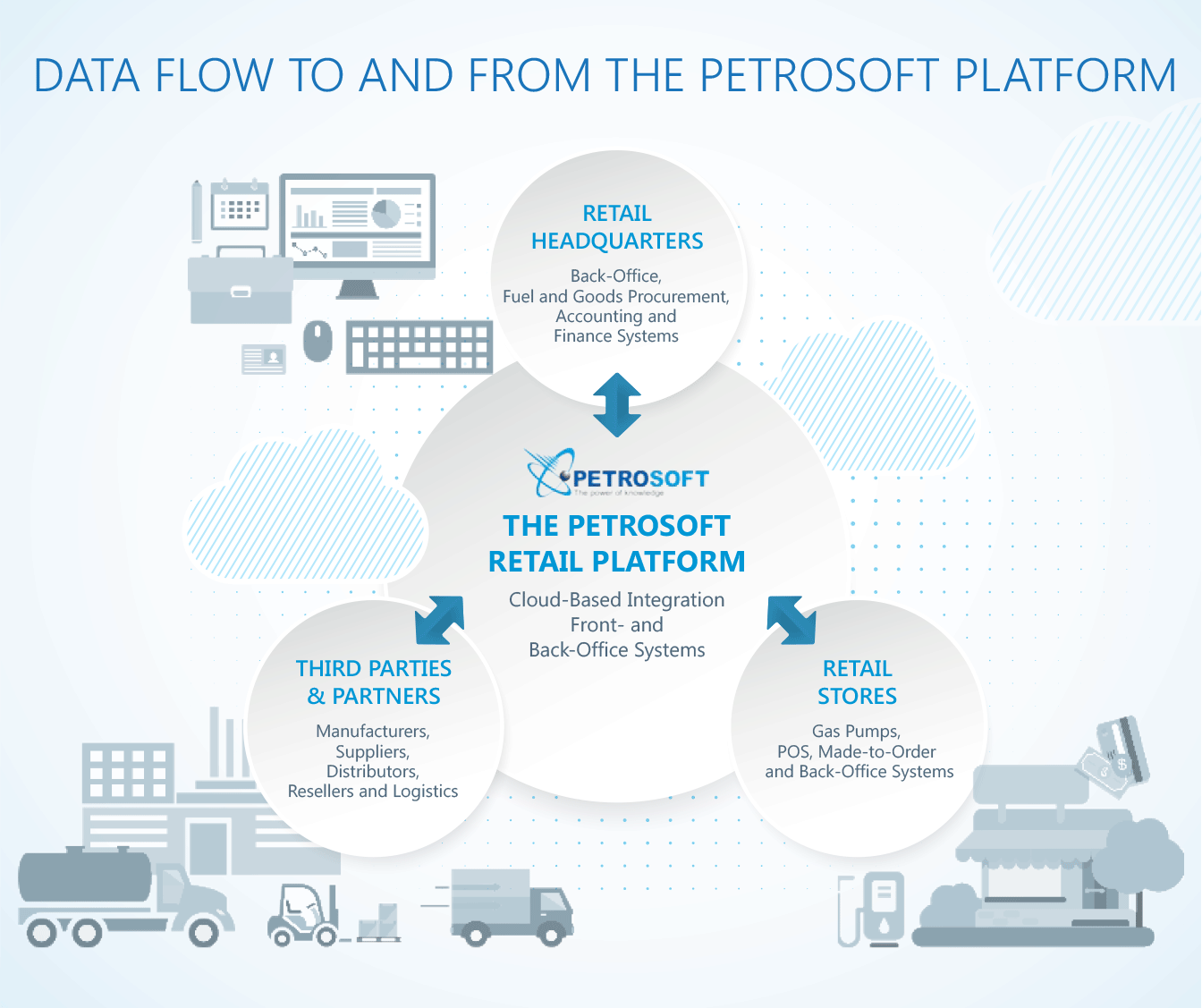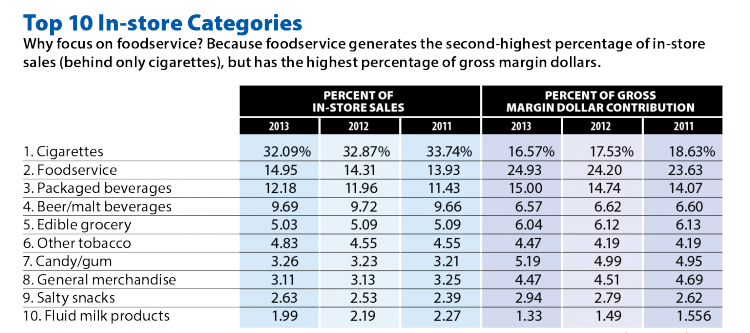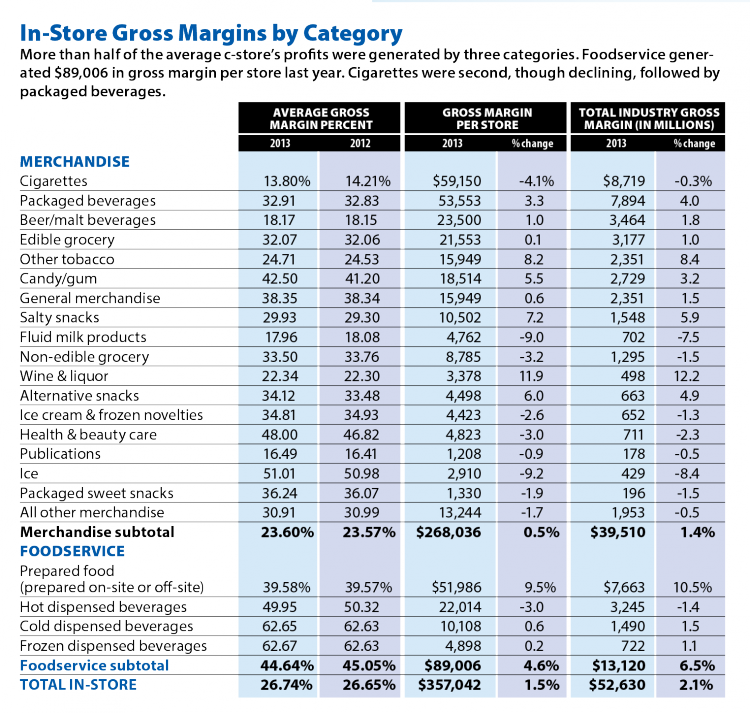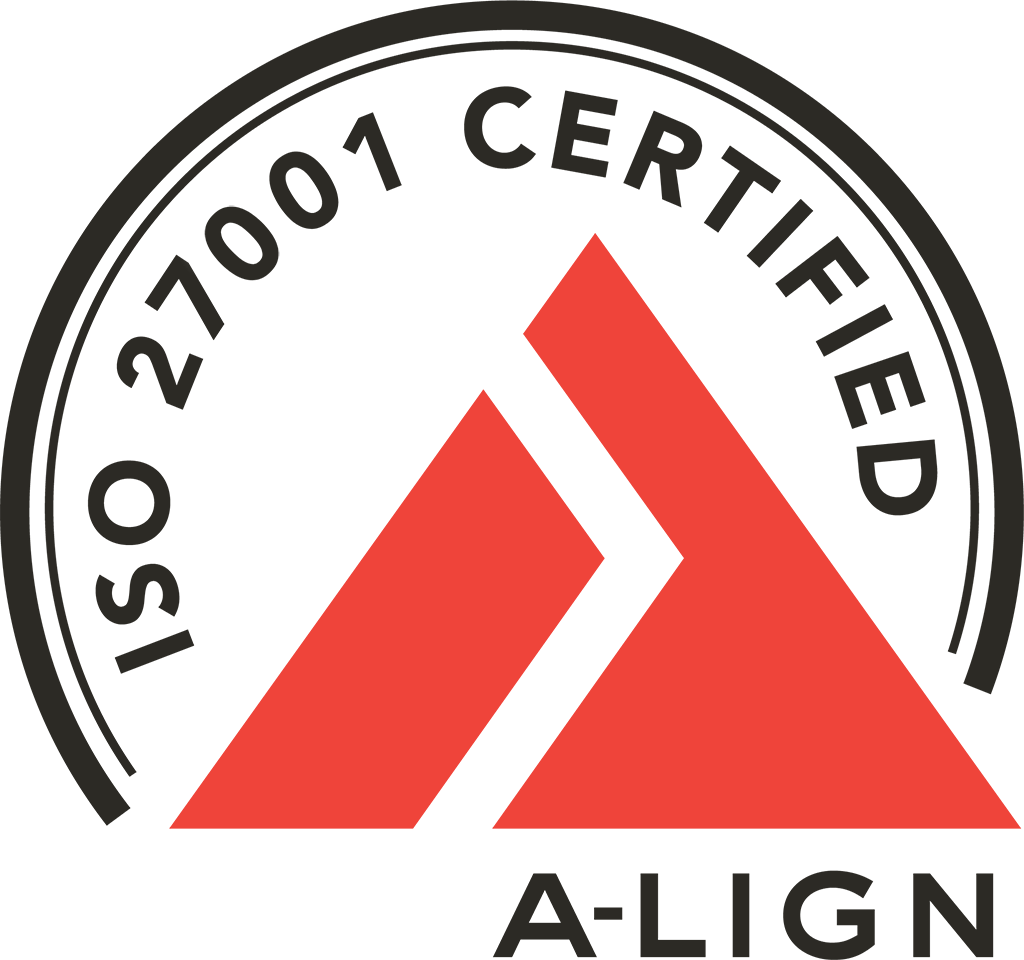How End-to-End Cloud-Based Integration Helps Retailers Meet Customer Demand, Manage Margins, and Prepare for the Future

Ask single-store retailers and multi-store operators alike what they consider their biggest business challenges, and the conversation will likely revolve around one topic: meeting customers’ demands while maintaining a healthy bottom line. In order to meet both of these objectives, retailers must anticipate what customers will want and understand the margin for each product they sell.
As the National Association of Convenience Stores (NACS) notes, “Shoppers recognize the c-store channel of trade for its convenient locations, extended hours of operation, one-stop shopping, grab-and-go foodservice, variety of merchandise and fast transactions.” Those expectations are a sea change from the days shoppers considered gas, coffee and super-sized soft drinks satisfactory c-store offerings.
Underscoring the importance of understanding margins at the item-level is the fact that c-stores generated about two-thirds of their gross profit dollars from in-store sales in 2013, even though motor fuels represented a much larger portion of total revenue, information from the Convenience Store News 2014 Industry Report reveals.
“The top 10 product categories represented 89.8 percent of in-store sales and 87.5 percent of in-store gross margin dollars,” the report says.

Those factors, paired with evolving advances in technology, are creating a perfect storm that threatens to sink retailers who are unable to keep their businesses relevant and profitable. End-to-end, cloud-based retail solutions such as the Petrosoft Platform, can help retailers stay afloat, and sail towards a more profitable future.
Also called Software-as-a-Service (SaaS) or, more recently, Retail-as-a-Service (RaaS) and 3rd Platform business technology, these solutions help retailers build their business by offering enterprise IT power that is designed to affordably scale from the single-store operator to companies comprised of thousands of stores.
“By 2017, three times as many retailers as now will succeed to explicitly pin their customer and operations strategies on 3rd platform technologies,” says the Worldwide Retail 2015 Predictions report by International Data Corporation (IDC), a premier global provider of IT market intelligence. These 3rd platforms are technologies built on mobile devices, cloud services, social technologies and Big Data.
“Being able to integrate front-end and back-office functions is key to satisfying today’s ever-more-demanding shoppers while building a profitable business,” says Sergey Gorlov, President and CEO of Petrosoft, LLC, a company that provides a cloud-based retail platform. “Retailers need transparency, visibility and the ability to control processes throughout the organization so they can communicate, compete and grow. Integrating gas pumps, POS, made-to-order foodservice systems, plus back-office and third party systems may seem like something reserved for enterprise companies. But cloud technology makes retail system integration affordable for companies of all sizes,” Gorlov says.
How Cloud Platforms Enable Inventory And Margin Management
Why should retailers move to cloud-based retail platforms? The answer is simple: Taking that step can help them reap positive bottom line results.
Cloud-based retail platforms reduce IT expenses and system complexities while delivering the kind of timely inventory reports and margin information that are so crucial to success. Retailers large and small alike can track the best-selling, highest margin producing items within their stores thanks to the integration capabilities cloud platforms provide.
“The single-store company can use the same technology as larger companies to keep their shelves stocked, and manage their inventory and margins in ways they never thought possible,” Gorlov says. “Understanding which items contribute to your bottom line and maximize your profit requires an easy-to-use and affordable reporting platform with features that help you monitor and control item-level sales margins from your desktop or any internet-connected device,” Gorlov stresses. “Without these tools, overworked staff, slow or inaccurate store data, and volatile fuel prices make it virtually impossible to have a profitable business.”
Integrated systems give retailers the ability to predict and react to consumers’ changing tastes and buying patterns, and then plan and allocate merchandise accordingly, the Boston Retail Partners 2014 Merchandise Planning & Allocation (MP&A) Survey notes.
“When done correctly, inventory moves, sales grow and profit margins reward,” the survey says. “Get it wrong and the retailer sees markdowns, out of stocks, poor performance and an inventory bubble that needs to be digested through the selling cycle, consuming space, inventory dollars and profits. Even worse, while this is happening, retailers don’t have room or the budget to fill the racks with better-performing merchandise.”
The Customer Connection
Cloud-based platforms do more than help manage inventory and margins; they also help centralize customer purchase and loyalty data, which enables one version of the truth across the entire organization.
“Centralized processing of point of sale systems offers retailers a leaner and more flexible store-level environment through the consolidation of servers, operating system and applications at the data center or within the cloud, rather than at the store,” The Boston Retail Partners 15th Annual POS/ Customer Engagement Benchmarking Survey reports. “Centralization allows for fewer devices and licenses to deploy and maintain, and helps application updates to be deployed centrally and more quickly. This allows for a more agile environment that can help the retailer offer a richer shopping experience and enable real-time integration across customer touch points.”
Centralization, in fact, is becoming increasingly important as the number of customer touch points multiplies across multiple channels. Whether at the fuel pump, in the foodservice area, at the checkout counter, or from their office or home, consumers are making buying decisions in a myriad of ways and expect retailers to meet their demands—whatever and wherever those demands may be. End-to-end cloud-based retail platforms deliver a seamless experience for customers and retailers alike by capturing customer data and buying patterns in ways that optimize inventory and margins and speed transactions to create an optimal customers shopping experience.
Preparing For The Future
While it is hard to envision what the retail landscape of tomorrow will bring, one thing is certain: technology will continue to propel the industry forward for companies of all sizes. The good news is that small- to mid-size companies will be able go toe to toe with the big guys thanks to evolving cloud-based platforms.
As Information Resources, Inc. (IRI) says in its Channel Migration: The Road to Growth Has Many Lanes report, “Sophisticated retail execution has become a critical skill among CPG manufacturers and retailers alike. To succeed, retailers and manufacturers must work as partners, embracing fast-paced joint business planning to get the right products to the right shelf at the right place and time.”
“Emerging cloud-based technology, such as Internet of Things (IoT) and Machine to Machine (M2M) communication, is promising to disrupt the retail ecosystem, creating an increasingly connected and transparent supply chain that blurs retail models and empowers the consumer like never before,” Gorlov concludes. “Retailers can take advantage of their position in the supply chain by tapping into the power and open architecture cloud-based retail platforms offer.”








2comments